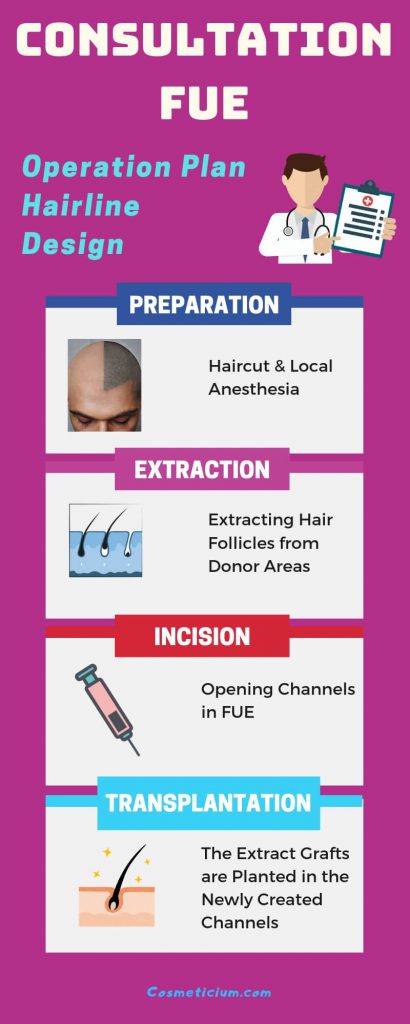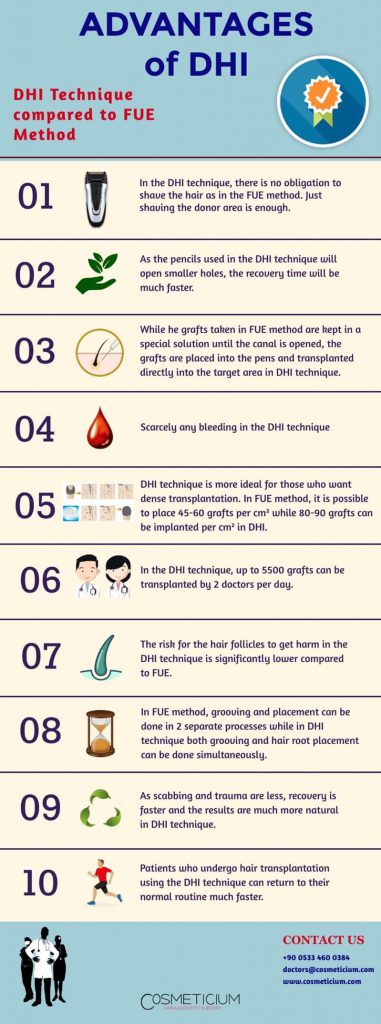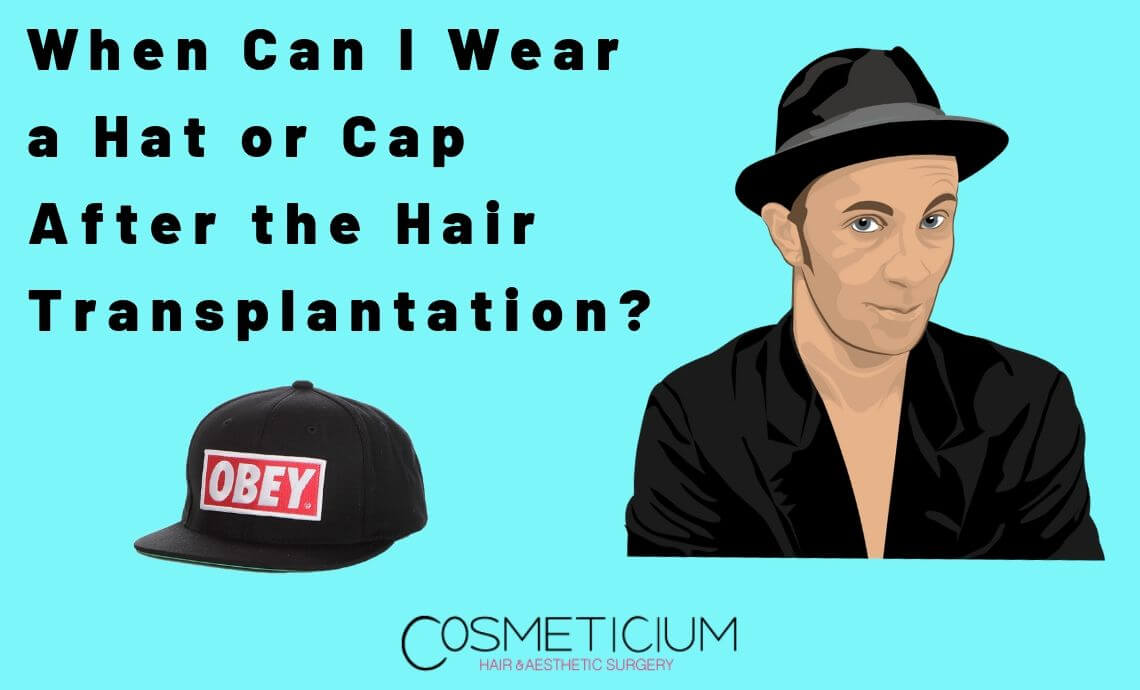First of all, the person who has the idea of having hair transplantation should do a very detailed research on hair transplantation and should be familiar with the subject beforehand. Although hair transplantation operations are related to asthetics, it is actually a health-oriented operation. It should be kept in mind that if it fails, many unwanted results may occur among which the most important one is the inflammation on the skin. After deciding to have hair transplantation, you should work with a clinic that is expert on hair transplantation by doing a meticulous search on every issue. Clinics with the necessary health criteria will enable the operation to be carried out healthily and with a high success rate.
One of the questions that the patients wonder most is when they can use the hat and cap to cover the scars of the operation after they have had hair transplantation. The details are in our article.
Table of Contents
What Are the Reasons of Hair Loss?
The main factor that leads the people to hair transplantation is the loss of existing hair. Unless these shedding events that appear in various forms aren’t prevented, the hair sheds and then the people decide to have hair transplantation. Hair has a certain living area on the body and if appropriate options are not offered on this area, hair loss problem may be seen due to the damages on the hair roots. The most obvious causes of shedding are stress and insomnia problems.
Hair loss problems are seen in 90% of people who experience stress Another factor is disruption of the hormone balance. This is especially true in women, and most women who experience hormonal changes also experience hair loss problems. These sheddings are usually temporary and are replaced by new hair. Hair loss problems can be seen as a result of using shampoo in a wrong way. Shampoos that have a lower level of chemicals should be preferred as much as possible.
Those who experience hair loss problems frequently are men. Therefore, men often apply for hair transplantation. In general, as a result of physical structure and genetic problems, 90% of men experience shedding problems due to various reasons. Men who give importance to the physical appearance prefers hair transplantation as a solution to this problem. Because it is a pain-free procedure and offers permanent solutions, many hair transplantation centers serve mainly male patients.
Hair Transplantation Operations in Turkey
Turkey is a country whose reputation has spreaded all over the world. Quite a lot of patients across the world came to Turkey for hair transplantation due to many different reasons mainly such as the techniques used and the affordable prices. The biggest title holder of this success is the achievement of hair transplantation specialists. In general, there are many patients and demands from Arab countries. The operations that have been very successful in every subject today surpass the quality in many European countries. Thanks to the high success rate of DHI hair transplantation method applied especially in Turkey, the number of patients who have visited our country for this advanced method has reached ten-thousands of people. This number continues to increase every year
A Brief Information About Hair Transplantation Techniques
Hair transplantation operations are usually carried out by using two different techniques: FUE and DHI (newly developed technique). First of all, the samples to be taken from the hair strands of the patient are sent for examination and the technique that will be applied to the person is defined.

The first of the mentioned methods is the FUE technique. It is a frequently preferred method and its success rate is very high. In the procedure applied in FUE technique, the hairs are taken from the nape and prepared to be injected into the treatment areas. Local anesthesia is applied before this procedure.

The other technique is DHI application. DHI is a method called direct hair transplantation. The procedure is carried out using special pens called Choi pens. Therefore, this method is also known as pen hair transplantation. DHI is the transplantation of the hair follicles collected onto the sparse or non-haired area with the help of specially developed pencils. Thanks to these pens, called DHI pend, both grooving and hair transplantation can be performed at the same time. Thus, two separate steps can be reduced to a single stage with DHI. In Turkey, DHI hair transplantation method is applied with a high success rate (95%).
Avoid Sweating After Hair Transplantation Operation
There are important points to be considered after the hair transplantation operation. By paying attention to these, the healing process can be easily circumvented. First of all, with the passing of anesthesia’s effect, although there is not much pain, slight dolor will be evident, and this process should be passed calmly. The area should not be in contact with hand or foreign substances. It is also important to protect it against impacts.
During the healing process, skin damaging factors such as sweating should be avoided. In case of sweating, the skin may be damaged and the desired success rate may not be achieved in the hair follicles. Therefore, you should stay away from physical activities that will force you and cause sweating on the first days.

Hair Transplanted Area Should Not Be Touched
It is quite wrong to make direct contact with the scalp. During the recovery period, it should not be contacted by any pressure and touch. If the transplantation area is the back or top of the scalp, then you need to change the lying position. Contact with the pillow during the night can damage the hair follicles.
Keeping the nape high with an apparatus prevents possible swelling during this period. Drug monitoring and dressing control are very important. Drugs should be taken on time and dressing order should be kept as stable as possible. The existing bandage must be protected, carefully removed and rewounded in dressings.
You May Also Like: How Should I Sleep After Hair Transplantation
Use of Accessories Such as Hats and Caps After Hair Transplantation
Another important issue after hair transplantation is the use of any accessories that may have an impact on the hair. When the hair follicles are in the process of healing, it is also harmful to use accessories of the type that will cover the scalp and prevent the hair roots from breathing as well as avoiding contact with the hair and head is extremely important. During the healing process, the use of accessories such as hats and caps is not recommended for the first 10 days before the hair follicles recover and the wounds are closed. You can review this article, where we describe various methods for covering the scars of operations after hair transplantation.
As the scalp heals, the pores begin to close and the skin goes back to normal. With this period, sensitive areas begin to gain normality. As a result, you can now return to daily life. The use of hats and caps may be recommended -although not often- after the removal of the bandages.

